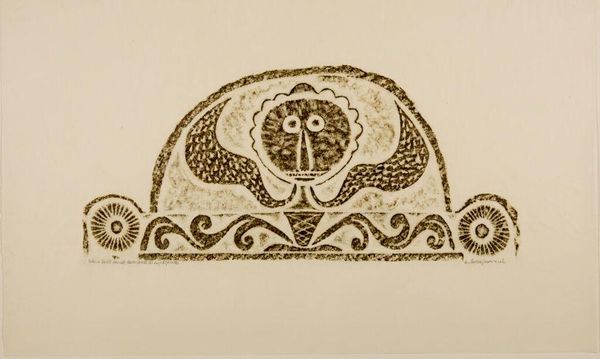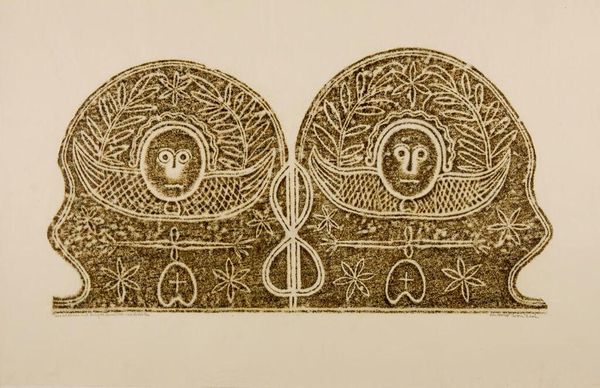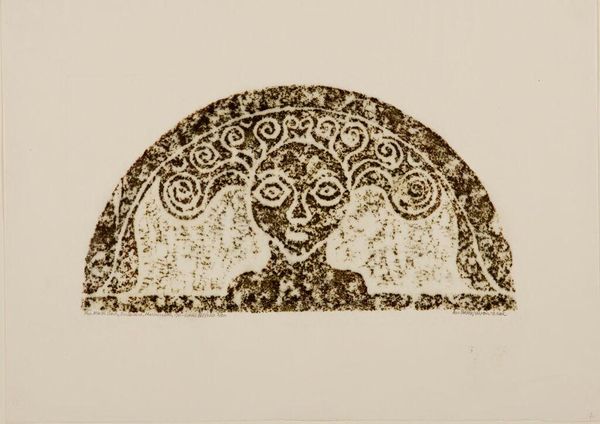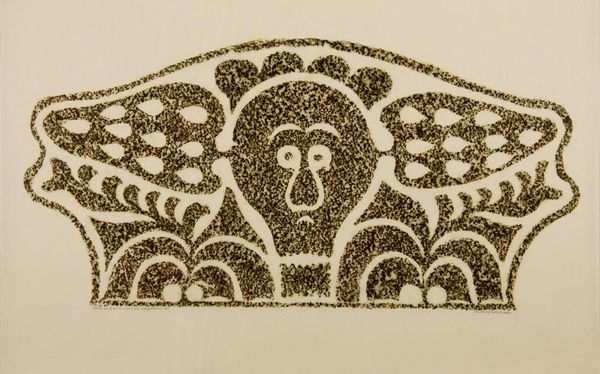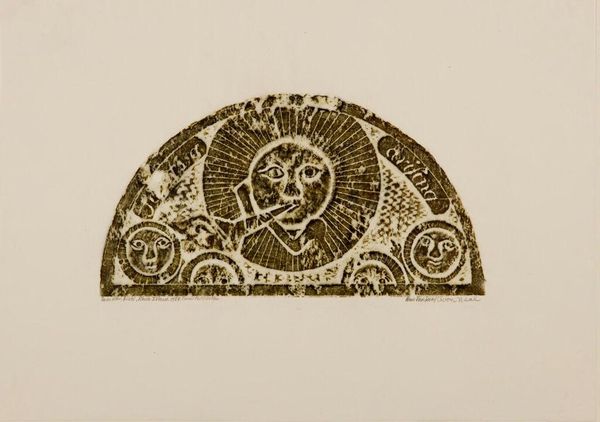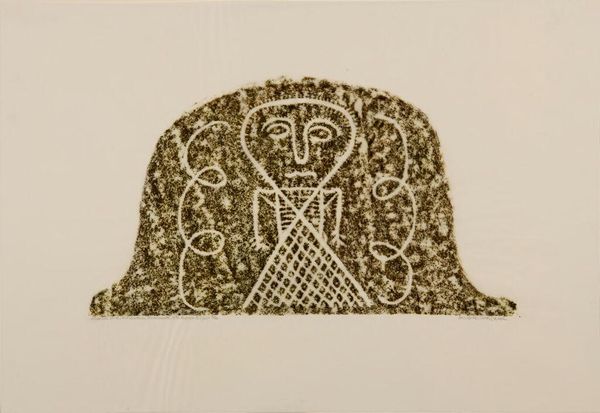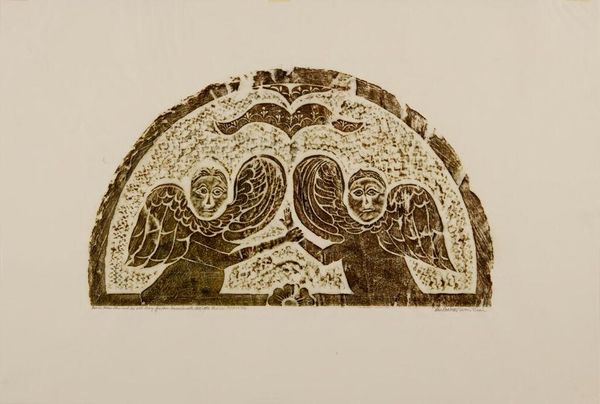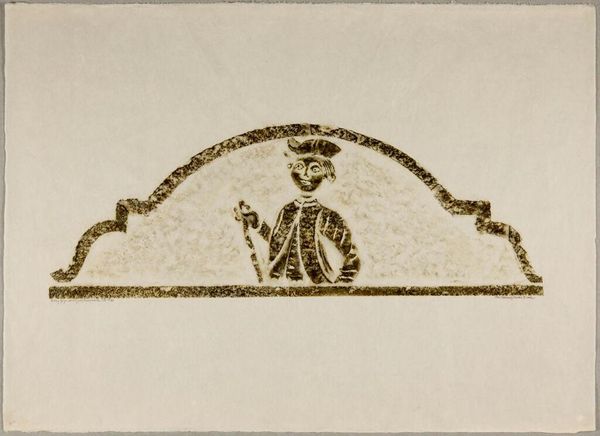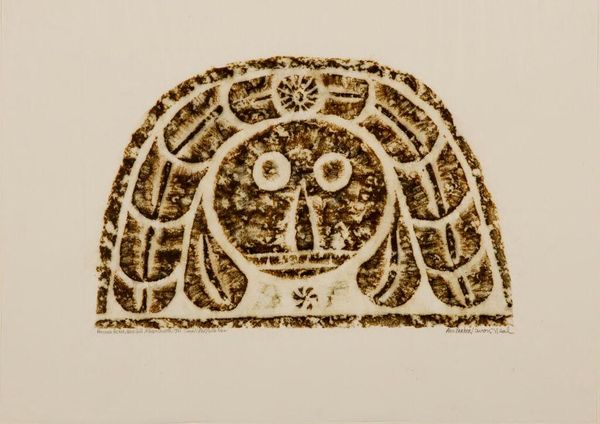
The Tombstone of Mary Whiting, aged 14 months, Rockingham, Vermont, 1781 c. 20th century
0:00
0:00
Copyright: CC0 1.0
Editor: This is "The Tombstone of Mary Whiting," created in 1781 by Ann Parker. It's a really intriguing image. The symmetry with the sun-like faces and the heart gives it an almost unsettling feel. What do you make of the iconography on this tombstone? Curator: These early American gravestones were public declarations, weren't they? The imagery, like the sun faces symbolizing the soul's journey and the heart representing love, were part of a visual language understood by the community. Editor: So, it was about communicating shared beliefs? Curator: Exactly. It’s also interesting to consider the socio-political context. The American Revolution had just ended; communities were rebuilding. These gravestones become powerful markers of memory and belonging, reflecting a need for stability and shared identity. Editor: That's fascinating. I hadn't considered how much social history is embedded in this one artwork. Curator: Indeed. By examining the visual language and the historical circumstances, we gain a deeper understanding of early American culture and its relationship with death, memory, and community.
Comments
No comments
Be the first to comment and join the conversation on the ultimate creative platform.
